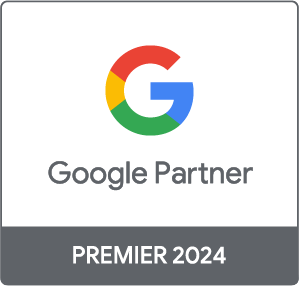Shopify e-Commerce Tracking: Solutions for 2025
Since April 2025, Shopify has been changing the game when it comes to e-commerce tracking. Traditional integrations based on checkout.liquid and confirmation scripts will slowly be disappearing.
Google is recommending the use of the official Google and YouTube application from now on to guarantee continuity in Google Ads conversion tracking and data collection in Google Analytics (GA4). Starting in August 2025 (for Shopify Plus) and August 2026 (for other plans), the abovementioned traditional methods will no longer be compatible, forcing all online sellers to rethink their technology stacks.
Ignoring the transition to new tracking solutions means accepting that you will lose control over your data, your analytics will be distorted, and you’ll no longer be able to effectively measure the performance of your advertising campaigns.
A new configuration option has arrived: Automated tracking is becoming inescapable. The Google and YouTube app, developed by Google, integrates natively into the entire Google ecosystem—Google Ads, GA4, Merchant Center, YouTube—and automates the configuration for tracking e-commerce events.
But it’s not all quite so simple: Do you have to give up Google Tag Manager (GTM) or combine it with the Google YouTube application, which is more limited? The choice is more strategic than it is technical.
Comparison of the Google YouTube app and Google Tag Manager (GTM)
Main features
The Google YouTube app provides a solid foundation for standard measurement needs. It covers conversions and essential e-commerce events (such as “add to cart” or purchases) in addition to enabling automatic syncing with Merchant Center. For sellers in need of a fast, robust, and reliable configuration, this is a good option.
Google Tag Manager, on the other hand, enables more advanced customization. It’s the ideal tool for integrating third-party platforms (Meta, TikTok, Pinterest, etc.) to track customized events or even for managing advanced rules for consent. However, it requires technical skills and continual maintenance.
|
Feature Compared |
Google & YouTube App |
Google Tag Manager (GTM) |
|
Ads & Analytics integration |
✅ Native, fast activation |
✅ Manual, customizable |
|
e-Commerce events |
✅ Auto-tracking (Shopify Standard) |
✅ Customizable (via dataLayer) |
|
Merchant Center |
✅ Integrated |
❌ Requires another solution |
|
Improved conversions |
✅ Yes, in one click |
⚠️ Yes, but needs configuration |
|
Other platforms (Meta, TikTok, Pinterest, etc.) |
❌ Not supported |
✅ Full integration with customized tags |
|
Advanced consent mode |
❌ Not supported by default |
✅ Yes, via the consent management platform (CMP) and GTM |
|
Maintenance |
✅ Automatic, without user intervention |
✅ Manual, depends on internal team |
|
Cost and resources |
⬇️ Low cost, very few internal resources needed |
⬆️ Cost varies based on complexity, needs technical skills |
Consent and compatibility with the GDPR and Law 25
With the General Data Protection Regulation (GDPR) and the recent advent of Law 25 in Quebec, personal data collection is now subject to explicit consent. The Google YouTube application and Google Tag Manager allow consent to be managed, but each has its advantages and limitations.
The Google YouTube application is compatible with Shopify’s native consent API. This integration is sufficient for simple situations, particularly with the Shopify consent banner. However, the moment a third-party consent manager (CMP) comes into play, the possibilities are more limited: Advanced Mode in Google Consent Mode is not activated by default and requires specific manual adjustments to avoid duplications or conflicts with the CMP.
Google Tag Manager enables a full, detailed configuration of Consent Mode V2, including Advanced Mode. This opens the door to tracking even without explicit consent (via anonymous signals) and seamless compatibility with all the major CMPs on the market.
Reliability and server-side tagging
The Google YouTube application uses data exchanges between servers for critical events (like purchases). This makes tracking more resistant to ad blockers and browser restrictions, thereby avoiding the loss of customer data.
Google Tag Manager alone relies on the client browser, which makes it more vulnerable. A version of server-side GTM mitigates this drawback and reinstates robust tracking, but it requires an additional technological investment.
Performance, reliability, and ease of use
The Google YouTube application is easy to set up, reliable, and maintained directly by Google and Shopify. It operates in harmony with Checkout Extensibility, without seller intervention. Users who like playing around with Shopify extensions can easily put this solution in place themselves.
Google Tag Manager offers unrivalled flexibility, but any site modifications can affect tagging. Its smooth operation depends on the technical configuration. Shopify no longer authorizes the injection of GTM on the traditional confirmation page, but extensions or partner pixels still enable its use in the payment steps.
Which should you choose, the Google YouTube app or Google Tag Manager?
Are you a beginner or do you lack technical resources? Opt for the Google YouTube application for full, reliable tracking that is hassle free.
Do you have a data team available or advanced marketing needs? Use the Google YouTube application for the Google ecosystem and Google Tag Manager for anything outside of that environment (Meta, Microsoft, AB Tasty, etc.). It’s also possible to implement GTM during checkout via the Shopify Pixels system through partner solutions such as Addingwell, which facilitates the integration of GTM without going through checkout.liquid.
Are you looking for maximum precision and complete control? Add a server-side architecture to GTM that is compatible with advanced Consent Mode and blockers. Pairing GTM with Shopify Pixel and server-side tagging now represents one of the most powerful, sustainable configurations available for advanced e-commerce.
Your vision for the ecosystem
Choosing between the Google YouTube application and Google Tag Manager, or opting for both, isn’t just a question of making a comparison and assessing available resources—it comes down to your overall vision for digital measurement.
|
Regardless of your answers to these questions, 2025 marks a turning point. Choosing between the Google YouTube app and GTM involves not just the technical aspect of tracking, but a redefinition of the foundations of your e-commerce ecosystem.
Whether you prefer simplicity, flexibility, or an advanced hybrid approach, your decision will have a direct impact on your ability to track your performance, comply with legislation, and evolve based on new market demands. Your choice is a strategic lever for building a reliable, sustainable database.
Our Data and Analytics team at adviso is available today to help you identify the solution that is adapted to your business issues and regulatory constraints. Contact us for a personalized evaluation.




%20(1)-1.jpg)









